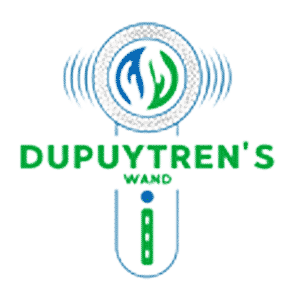If you type for a living and have been diagnosed with Dupuytren’s Contracture, you will know that carrying out your job is almost impossible. If you can’t straighten out all your fingers, can you type? I don’t know about you but I can’t. When you suffer from Dupuytren’s Contracture, you develop a lump on your hand at first, which in its early stages doesn’t even bother you. However, as the condition develops, the lump gets bigger and bigger, which makes things a little bit awkward. In the next stage of the disease, a cord extends from the node in the hand to one of the two joints in the finger. This is where things become out of hand, and you can no longer carry out daily tasks. The finger bends downwards into the palm and then can not be straightened. The sufferer will have to go through surgery if the condition is extreme.
If the patient decides to go ahead with the Dupuytren’s Contracture surgery, they will not be able to use that hand for at least four weeks. However, recovery can take as long as twelve weeks or longer if physiotherapy is required. After surgery, the Dupuytren’s Contracture patient may experience numbness in the hand and tingling in the fingers. It is also expected that the hideous scar becomes infected because of the incision’s nature, which is done in a zig-zag motion across the palm. Following the operation, the use of a brace or splint is needed to help with recovery. Recovery from a fasciectomy, which is the name for a Dupuytren’s Contracture surgery, is slow and painful. There is also a big chance that the condition returns despite having an operation to remove the nodule.
If you decide against an open surgery, needle aponeurotomy is another option. In this procedure, a needle is inserted directly into the infected tissue and wiggled from side to side to release the finger. The needle aponeurotomy is usually sufficient; however, it has numerous potential side effects to be aware of before having the treatment. Patients who have had needle aponeurotomy claim that it is extremely painful and takes several weeks to recover. After the procedure, the hand is very tender, and there is swelling at the needle entry site. Bleeding, numbness, infection, and nerve damage are other potential side effects to be aware of. On top of all that, there is still a chance that the condition may return.
The Dupuytren’s Contracture home treatment that does not come with any side effects is using the Dupuytrens wand, tape, and jelly together. These three products work together to provide relief from the symptoms of Dupuytren’s Contracture without an extended recovery period. The disease may return after using these items; however, they can be used as many times as necessary, unlike a surgery or needle aponeurotomy. Patients who have used these products have been pleasantly surprised by how quickly they work to eliminate the condition.
There are other Dupuytren’s Contracture home treatment options available to select from, including the use of a splint or brace. This treatment is not recommended because it prevents the affected hand and can cause extreme discomfort. The Dupuytrens tape is the ideal replacement for a splint or brace as it is lightweight and allows you to use the hand. Massages can also be used to treat Dupuytren’s Contracture; however, they don’t penetrate the hand deeply enough to be effective; the Dupuytrens wand does. When patients tried over-the-counter medications, steroid injections, and even acupuncture, none of them experienced long-term relief from the condition, and many of them had to deal with unwanted symptoms from these treatments. That is why so many people have started using the Dupuytrens wand, jelly, and tape.
